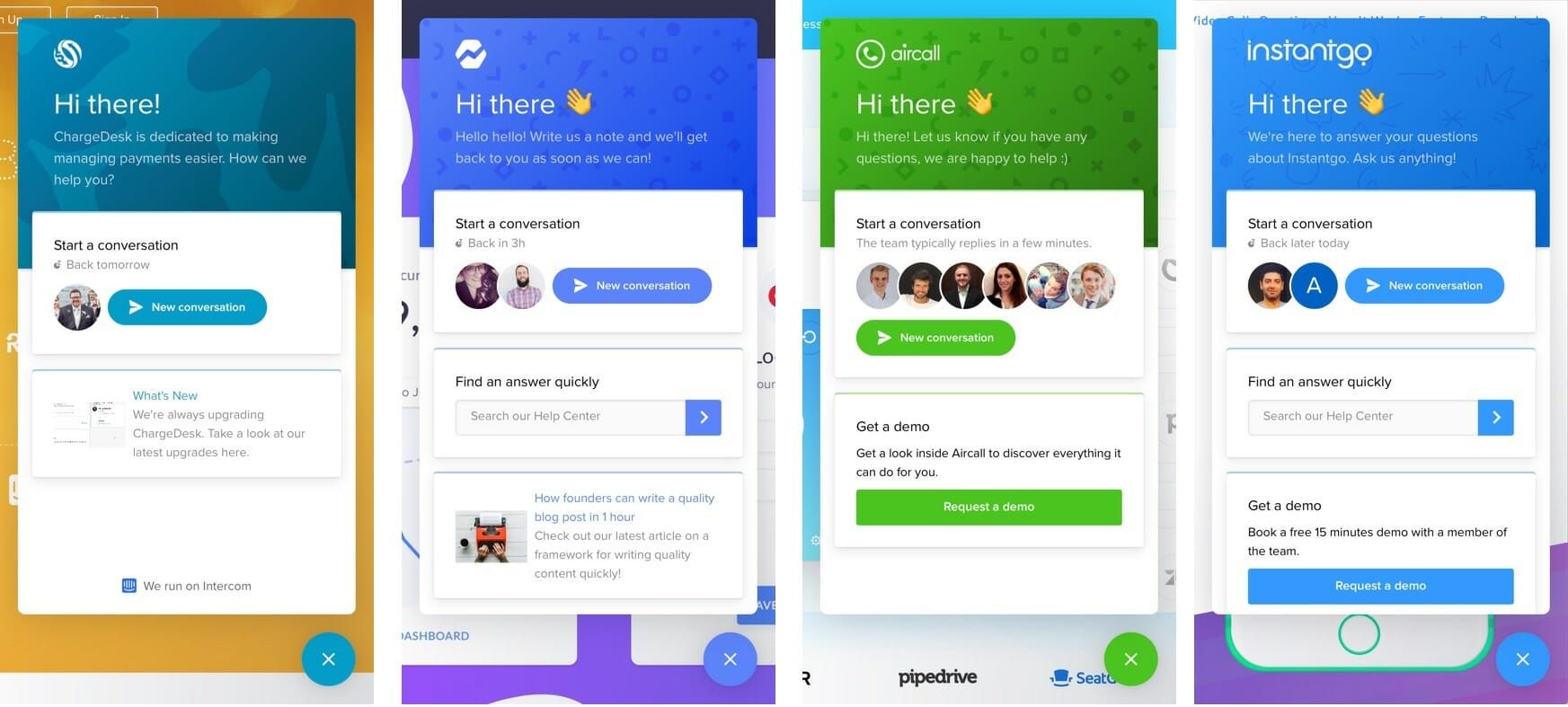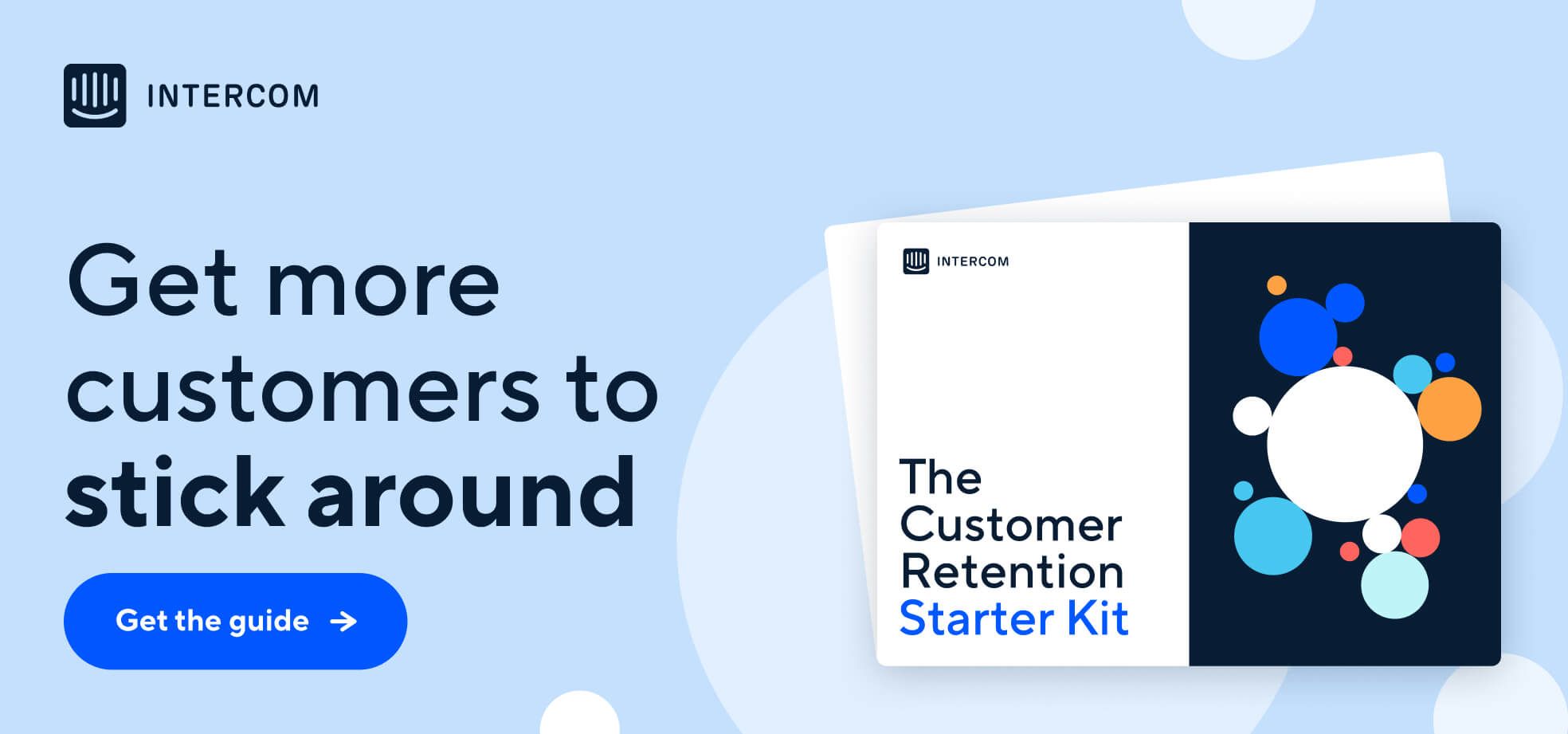
Customer acquisition strategy: How to acquire more customers in 2023
Main illustration: Matt Yow
Even the best businesses in the world lose customers. That’s why you need to find a strategy to steadily bring in new customers in order to survive – and thrive.
Without a strategy to acquire customers, it’s easy to keep doing what seems to be working without examining how effective your approach truly is. Or on the other hand, invest too little money in a channel that has the potential to bring in many more customers than it does right now.
The best way to improve your customer acquisition is to have a set strategy – one where you know how you’re going to generate demand, what you’re spending on these efforts, and how you’re going to convert visitors into paying customers. (For that last critical step, live chat and chatbots can help!)
What is customer acquisition?
Customer acquisition is the set of activities that businesses use to bring in new customers. Acquiring new customers involves creating a sustainable acquisition strategy that can evolve over time.
You need to put resources and time into customer acquisition because you can’t assume your customers will always stick around. It’s possible to describe the three primary reasons for B2B customer churn like this:
- Marriage: This happens when one of your customers acquires another, or two merge into a new company. For them, it might mean more money — for you, it means the loss of an account.
- Divorce: Some of your customers will leave you. They’ll find a lower-priced competitor to try instead or go back to a more familiar product.
- Death: Some of your customers just won’t be able to pay you. This usually happens when their company goes out of business or experiences financial hardship.
Because some level of “marriage, divorce, and death” are inevitable — no matter how good your retention strategy is — you need to have plans in place to fill the gaps left by these lost accounts and sustain your business long term.
Customer acquisition starts with your product
The first plan you need to make is your product roadmap. The best marketing in the world can’t help you if your product or service isn’t up to scratch.
At Intercom, a lot of our customers come to us after experiencing our products on other websites. When people go to a website that has our Messenger, they experience the power of receiving instant answers through live chat. By default, our Messenger shows a small “We run on Intercom” message that links out to more information. That’s why we prioritize high product standards above all else — it helps our product market itself.

Intercom Messengers around the web
Paid vs. organic customer acquisition strategies
Of course, we support the product experience with other customer acquisition activities. Typically customer acquisition strategies fall into two buckets: paid and organic.
You’re using paid customer acquisition strategies if you’re actively investing money to get a potential customer to take action. This may mean that you pay a fee when they click a link or ad or that you send money to another business in exchange for a customer referral.
Some of the most common paid customer acquisition methods are:
-
Pay-per-click (PPC) ads
Small, text-based ads on Google and other search engines to drive direct response or brand awareness. You pay every time someone clicks your ad. It’s a cost-effective way to get your brand “above-the-fold” if your website content is not ranking highly enough.
-
Display ads
Similar to PPC ads, except these ads run on websites. Typically used for brand awareness, you can choose to pay every time someone clicks or views your ad
-
Affiliate marketing
The practice of paying other website owners (your “affiliates”) to recommend your product or service
-
Referrals
Programs where you pay existing customers to recommend your product or services
-
Promoted social media
Promoted posts in your Facebook, Twitter, or Instagram feeds. Some social media platforms charge you only if they help you acquire a customer, while others may charge you based on the number of views or clicks your ads get.
Organic customer acquisition strategies also cost your business money but only in that you have to pay your team to do it. It doesn’t cost you anything to put that marketing online. It’s sometimes called “inbound marketing” because it’s meant to bring people “inbound” to your website.
Most of the activities related to organic customer acquisition also take place solely on your own site, not so-called “rented territory” like social media or search engines. This gives you more control over how your inbound marketing activities look and feel.
Organic customer acquisition methods you might try include:
-
Content marketing
Development of blog posts, guides, infographics, videos, podcasts and more to answer questions, solve problems, and introduce readers to your business
-
Search engine optimization (SEO)
Optimization of your website content to boost its rankings on Google and other search engines for relevant searches
-
Email marketing
Simply put, sending emails to potential customers
-
Social media marketing
The practice of posting, responding, and engaging with people on Facebook, Twitter, LinkedIn, Instagram. and more to drive loyalty and awareness
-
Events
Face-to-face marketing to attract, convert, educate, nurture, and delight your audience
So which one is better? It depends — the strategies in these two groups have varying costs and rates of success based on what kind of business you’re running and the kinds of customers you’re trying to acquire.
Our customer acquisition strategies starting out
Here’s what we did early on (and still do on a very regular basis) to attract potential customers.
Content marketing
If you haven’t noticed, we’re big advocates of content here at Intercom. That’s how we kept the momentum going in the early days, when our co-founder Des wrote two to three blog posts per week and ran regular webinars. And to this day, we invest heavily in evergreen blog posts, books, podcasts, guides, and videos to attract people looking to do things that Intercom can help them with.
Like this blog post that you’re reading right now on customer acquisition? It’s our way to helping you learn more on the topic and introduce you to the ways Intercom can help (more on that later).
Keep in mind content does not come cheap. The companies producing high-ranking content all seem to have one thing in common: they’re investing time and money to create quality content. Research backs this up. Backlinko found that the longer and more in-depth your content is, the more likely it is to rank highly in search.
Email marketing
Early on, Des also wrote ~100 emails every day to tell potential customers about Intercom, show them what Intercom might look like for them, and get their feedback.

Des’s daily emails
These days, we run more scalable email marketing campaigns in addition to sending personal emails. Our sales team sends automated follow-up emails to keep smaller accounts warm most efficiently. We also send a weekly “Inside Intercom” newsletter to subscribers to highlight our newest blog posts, upcoming webinars, and other events. It’s a nice way to keep customers engaged with us, and it also shows people who aren’t yet customers how much value we bring.
Live events
We started hosting small events in 2015 as a way to personally build relationships with our customers, users, prospects, and the industry at large. Now, we could have chosen to run advertising or attend established conferences to connect with these groups, but our homegrown events had a distinct advantage in that they connected us with people that we specifically wanted to meet. We had the ability to speak directly to them and hold their attention for a longer period of time in a space that we specifically designed and created.

The 2017 Inside Intercom World Tour
Later on, these cupcake events grew into larger Intercom World Tours where we intentionally went to cities that are known, growing tech hubs and home to many of our paying customers as well as users who were simply trialling Intercom. By continuing to share the lessons we’ve learned growing Intercom as a product and as a company, we’ve been able to capture the attention of other businesses — our potential customers — in a similar stage of growth.
Nowadays, live events are a little trickier (but on the way back, we hope!). With that in mind, we’ll be hosting our first global virtual launch event on March 23rd, 2022 – New at Intercom! We’re inviting professionals across marketing, sales, and support to hear trends, gain insights, network with peers—and be first to see our new products.
Determine the ROI of your acquisition tactics
To identify the tactics that are the most effective for your business, look at your customer acquisition cost, or CAC. Customer acquisition cost is the budget required to acquire a new customer, either overall or from specific marketing channels.
How to calculate your CAC
To find your CAC, you can either calculate the average CAC or the CAC for a specific acquisition method.
To find your overall CAC, first choose a period of time (for example, a month). Divide the total amount of money you spent on your customer acquisition efforts in this period of time by the number of customers acquired during this same period. The result will be your average cost to acquire a single customer (average CAC).

If you want to find the CAC of something like PPC ads or content marketing, the steps are the same, except you’ll divide the amount you spent on that specific acquisition method by the customers it brought in.
If you do this for each of your marketing channels, you’ll learn exactly how much it costs to acquire a customer from one source versus another.
Optimizing for CAC
When you’re just starting out with limited capital, acquiring new customers at any cost — especially to fill the gaps caused by closed accounts — is one of the worst things you can do.
Knowing your CAC helps you calibrate your investment in different acquisition channels. With it, you’ll know that the marketing channels you use are actually contributing to your growth, plus exactly how many new customers they’ve brought in compared to other channels.
“Knowing your CAC helps you calibrate your investment in different acquisition channels”
For example, if PPC is effective but costly, you might just reduce your ads to a few high-converting keywords. If your cost to acquire a customer via content is low and content has the highest return on investment out of all your acquisition methods, that’s a sure sign that it’s time to invest in your content marketing team.
Ultimately, calculating your CAC will help you develop and document a successful customer acquisition strategy. Armed with this data, you’ll know which channels you’re using, what you’re spending on each one, and how much each customer costs to bring in through each channel.
Turn acquired visitors into acquired customers
Getting potential customers to your website is just step one of customer acquisition. You need a way to convert those onlookers into paying customers. That’s where Intercom can help. Our chat window is not just a great messaging tool — it can be a powerful acquisition driver as well.
When used on your marketing website, our Messenger can help you proactively engage with visitors with the highest purchase intent and accelerate lead generation.

Example of visitor auto messages on Elegantthemes.com
Once a visitor engages with the Messenger, you can use chatbots to automatically qualify people who respond and instantly route the best leads to the right salesperson.

More and more businesses are seeing improved customer acquisition using live chat and chatbots:
- Housecall Pro saw a 35% lift in lead to paid conversation rate for live chat versus other channels.
- By using live chat software instead of forms, Copper saw a 13% increase in capturing their leads’ details.
- Showing visitor auto messages helped Unity increase their visitor to paid conversion rates by 45%.
Acquire more customers with cost-effective marketing strategies
You may already be acquiring new customers at a steady clip, but there’s always room to improve your customer acquisition strategy. Sit down, take a hard look at your CAC, and decide what to scale up, scale down, or stop. Doing this will make a big difference, not only in the cost of your marketing, but also in how effective you are at driving long term business growth.








